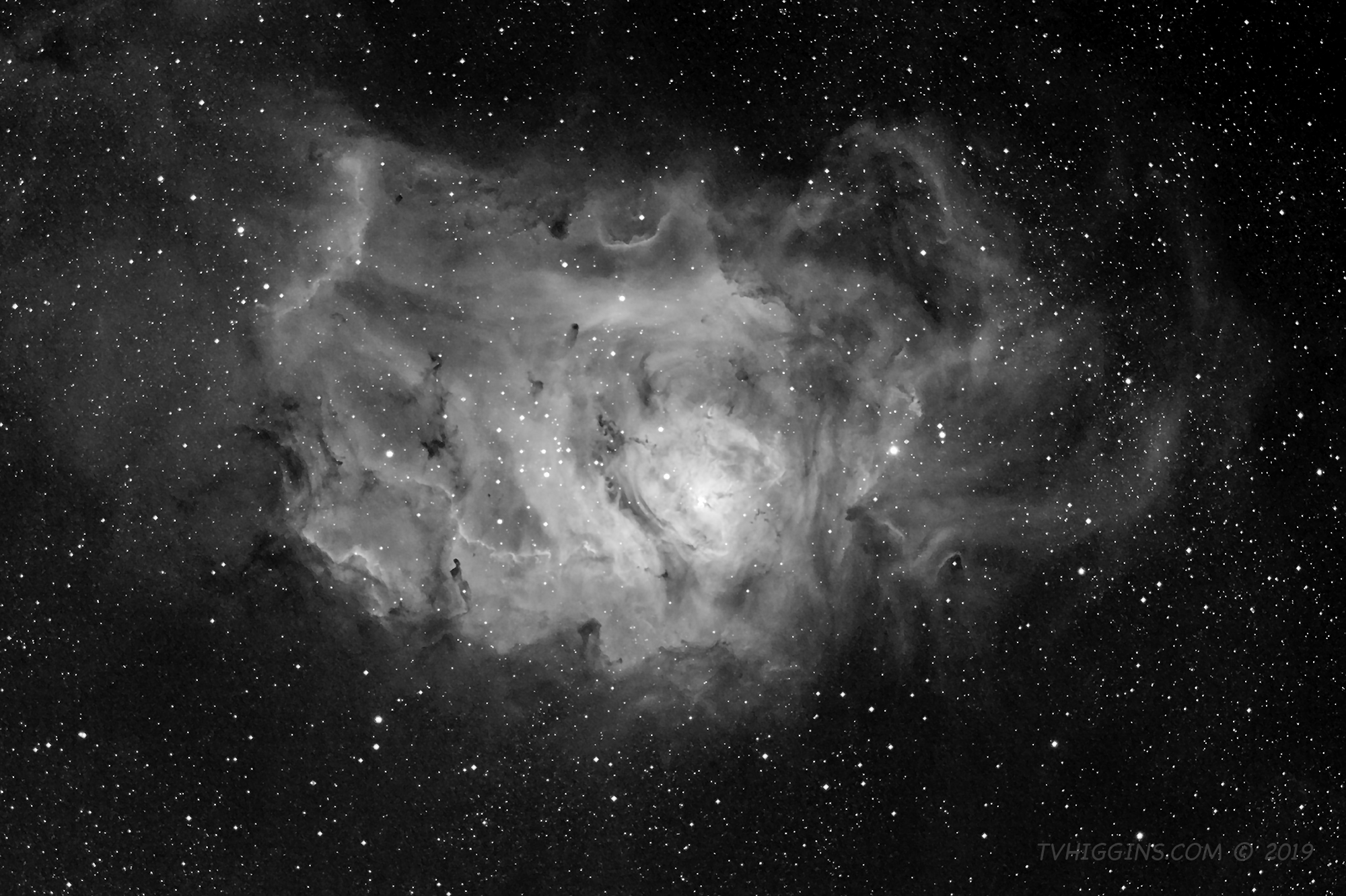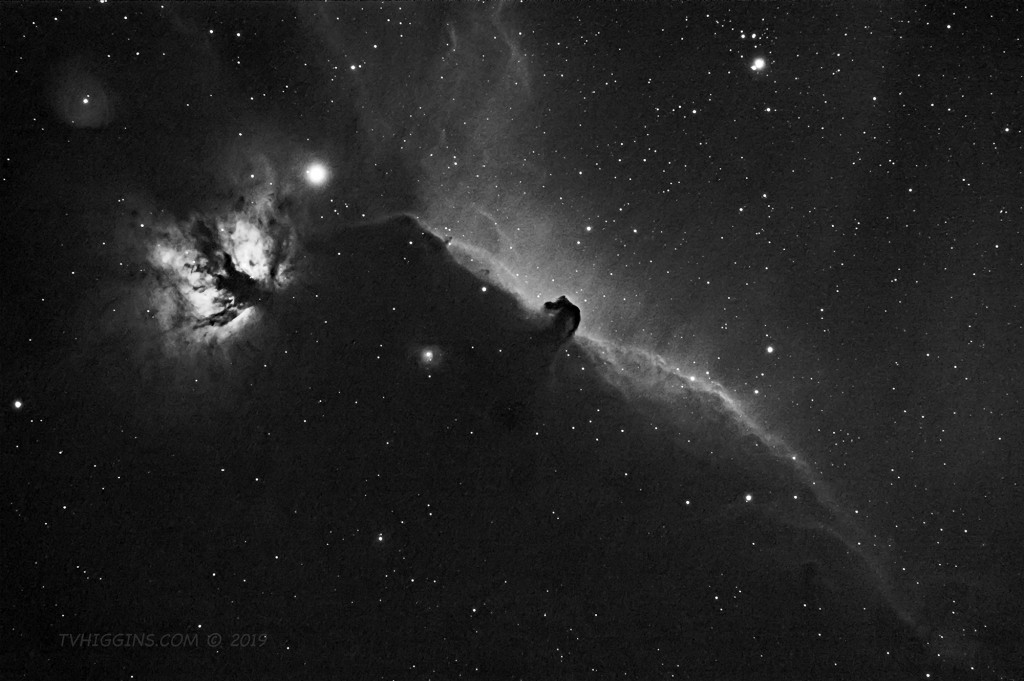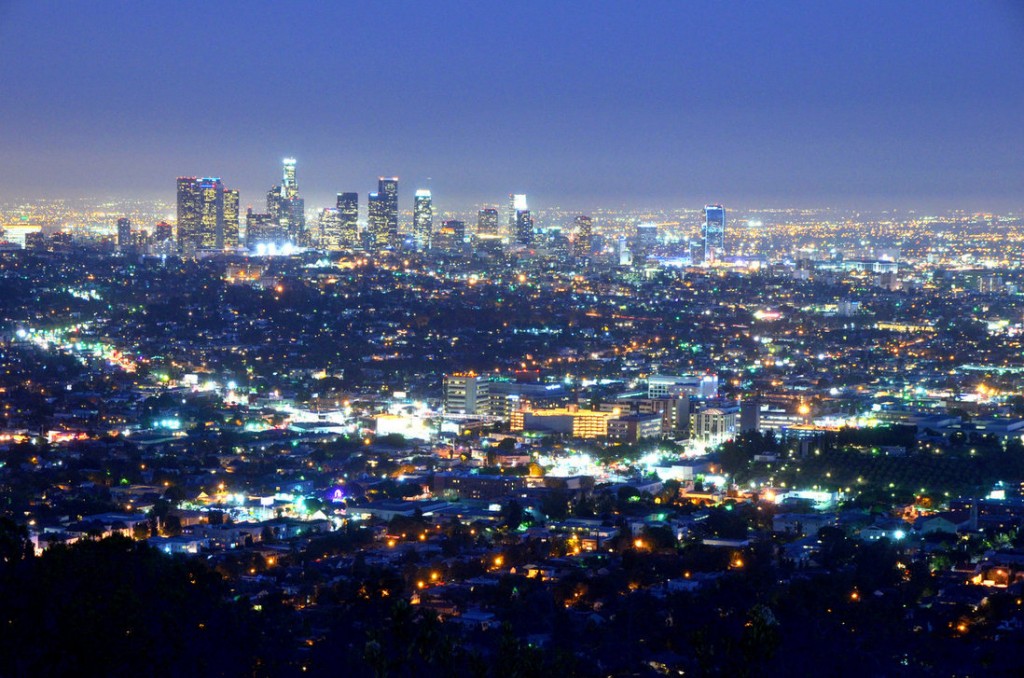The Lagoon Nebula in H-Alpha
- Telescope: Stellarvue SVA130T-IS
- Mount: Losmandy G-11 with Gemini 2 controller
- Autoguiding: Yes
- Optical Configuration: 0.72x field flattener & reducer (f/5)
- Filter: 12-nm narrowband H-alpha
- Camera: Canon 60Da
- Light Frames: 32, 5-min. exposures
- Calibration: 36 darks, 100 biases, 30 flats
- Exposure Time: 160 min. (32 x 5 min.)
- ISO: 800
- Pre-Processing: PixInsight
- Processing: Photoshop CC
- Imaging Location: Los Angeles, Calif.
The Lagoon Nebula is one of the finest examples of a stellar nursery and one of only two nebulae visible to the naked eye. Located in Sagittarius, the nebula lies along the intersection between the galactic plane and the plane of our solar system (ecliptic plane), just a few degrees off a direct line of sight to our galactic center (Sgr A*).
The Lagoon is a giant cloud of dust and gas about 100 ly wide, 50 ly high, and about 4,100 ly away. Peppered throughout its expanse are a number of smaller dark features called Bok globules, which astronomers believe to be stars in the making. These “protostars” consist of dense, light-absorbing balls of gas and dust collapsing under their own weight, a process that also created the open cluster of new stars (NGC 6530) that now makes the whole nebula glow. These new stars are only a few million years old, infants on a cosmological time scale.
Ultraviolet light from NGC 6530 and other stars within the nebula causes the hydrogen gas to glow (fluoresce) in the red. A special narrowband filter placed over the camera sensor lets only this red light through and blocks everything else, which allows emission nebulae like the Lagoon to be photographed from light-polluted cities like Los Angeles.
[For Brian — friend, physicist, outdoorsman. You are greatly missed.]


